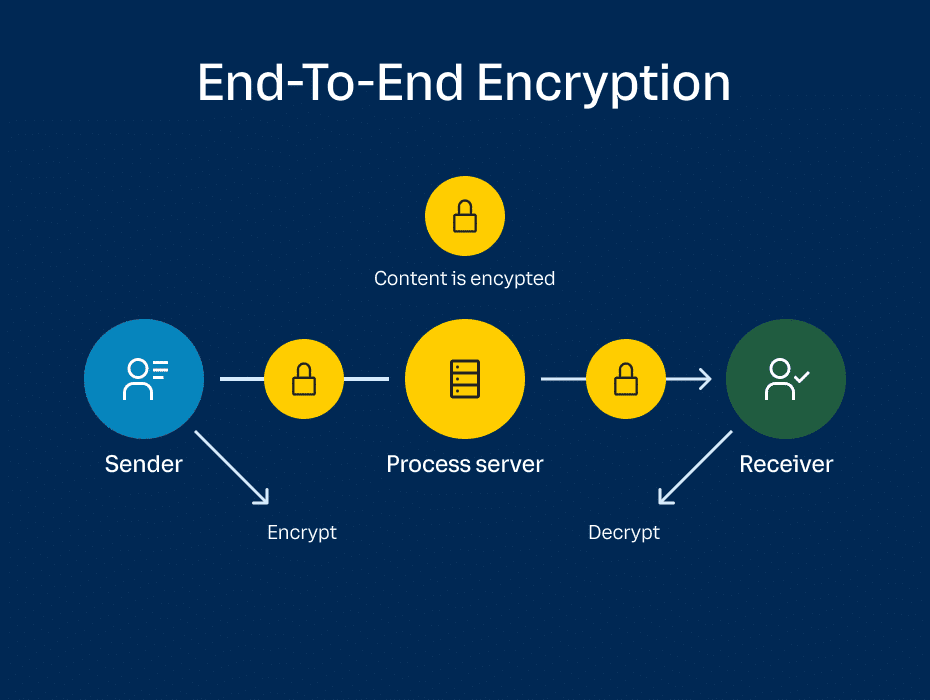What is end-to-end encryption you ask? Well, end-to-end encryption or E2EE is a method of securely communicating data between two parties.
But the security is so strong that only the intended recipients can read the data. It helps protect against eavesdropping, data tampering, and message forgery.
It does so by encrypting the data at the sender’s end and decrypting it only at the recipient’s end.

How does End-to-End Encryption work?
E2EE involves the use of encryption keys, which are long, random strings of characters that are used to encrypt and decrypt data.
In E2EE, each end of the communication has its own unique encryption key, which is known only to that particular end.
When a sender wants to send an encrypted message to a recipient, they use the recipient’s encryption key to encrypt the message.
The recipient then uses their own key to decrypt the message. The keys are generated and managed using a key exchange protocol.
This protocol allows the two ends to exchange keys securely without the risk of them being intercepted by a third party. One commonly used key exchange protocol is called the Diffie-Hellman key exchange.

End-to-End Encryption in Practice
A variety of applications, including email, instant messaging and online voice and video calls use E2EE.
Some examples of E2EE-enabled communication platforms include Signal, WhatsApp and Skype.
One of the main advantages of E2EE is that it makes sure only the intended recipients can read the communication.
Even if a third party were to intercept the encrypted message, they would not be able to decrypt it without the key.
This makes E2EE a powerful tool for protecting sensitive information. Things like financial transactions, personal information, and business secrets come under this bracket.
E2EE and Law Enforcement
One potential downside of E2EE is that it can make it more difficult for law enforcement to access communication data as part of an investigation.
As mentioned, the data is encrypted and can only be decrypted by the intended recipients. As a result, the law enforcement may not get access to it without the key.
To address this issue, some governments have proposed a legislation that would require E2EE providers to build “backdoors” into their systems, allowing law enforcement to access encrypted communication data with a warrant.
However, many security experts have countered such proposals. They said that building such backdoors would weaken the overall security of the system and make it more vulnerable to malicious attacks.
E2EE and Cloud Services
One can also use E2EE to secure data stored in the cloud. In this case, the protocol encrypts the data before uploading it to the cloud.
It is decrypted only when the intended recipient retrieves it. This helps protect against unauthorized access to the data, as well as data breaches.
E2EE and Human Rights
Human rights activists and journalists across the globe have also embraced E2EE.
It acts as a tool for protecting their communication from government surveillance and censorship.
In countries where governments restrict freedom of expression, E2EE can help individuals communicate securely and privately, without fear of reprisal.
Conclusion
End-to-end encryption is a powerful tool for securing communication and protecting sensitive information.
It may present some legal dead ends for law enforcement.
But the overall benefits of E2EE in terms of security and privacy make it an important tool for protecting individuals and organizations.










